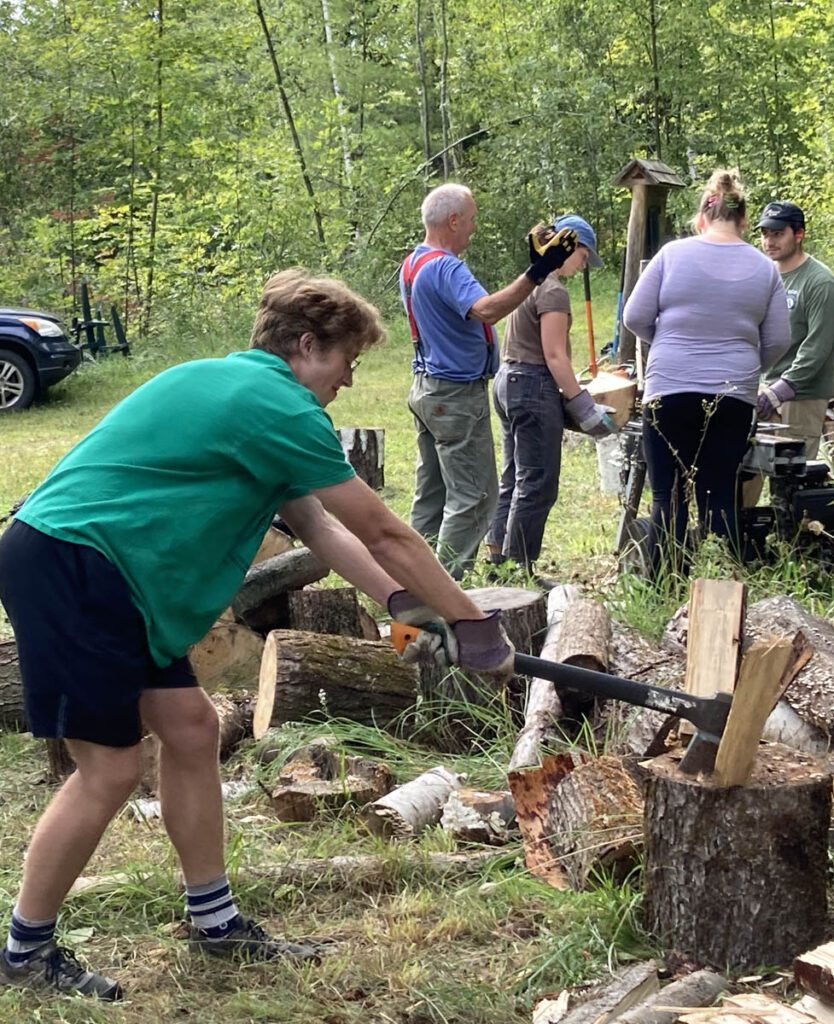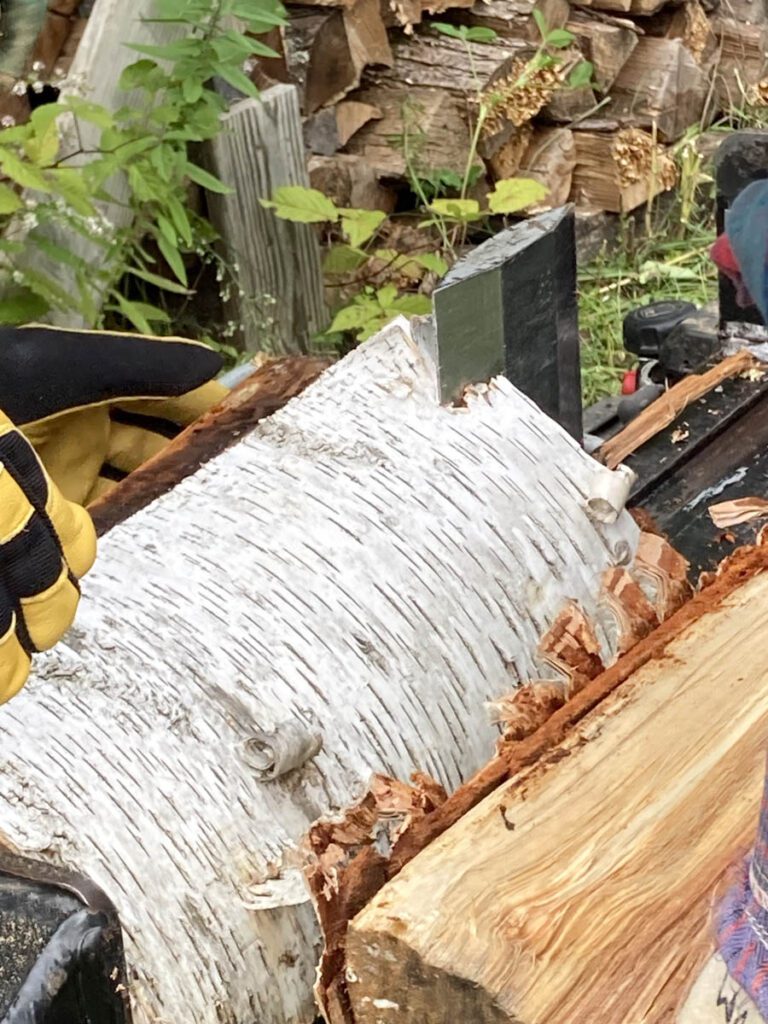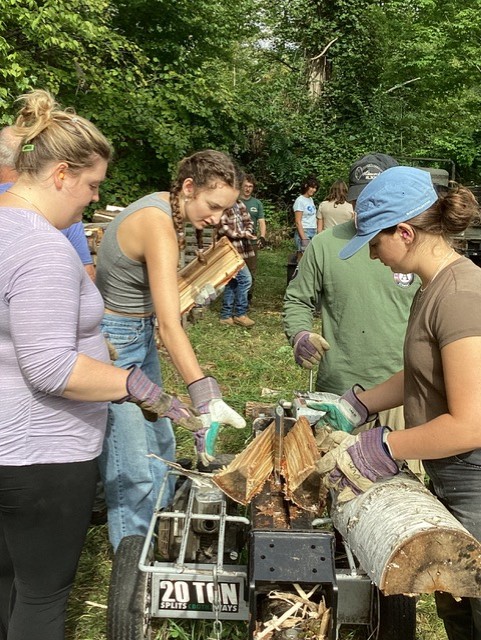
On a recent sunny Friday afternoon, 22 University of Vermont (UVM) students gathered on a grassy log landing at the Little Hogback Community Forest in Monkton. Most were enrolled in Cecilia Danks’ undergraduate Community-based Conservation course. On their first field trip of the semester in this upper-level service learning course, the students were just dipping their feet into the water of community-based conservation.
Cecilia wore two hats that afternoon—one as UVM professor and the other as one of the 16 shareholders who collectively own the Little Hogback Community Forest (LHCF). Several of her fellow shareholders had taken time out to meet with the students that afternoon, along with David Brynn, the executive director of Vermont Family Forests (VFF).
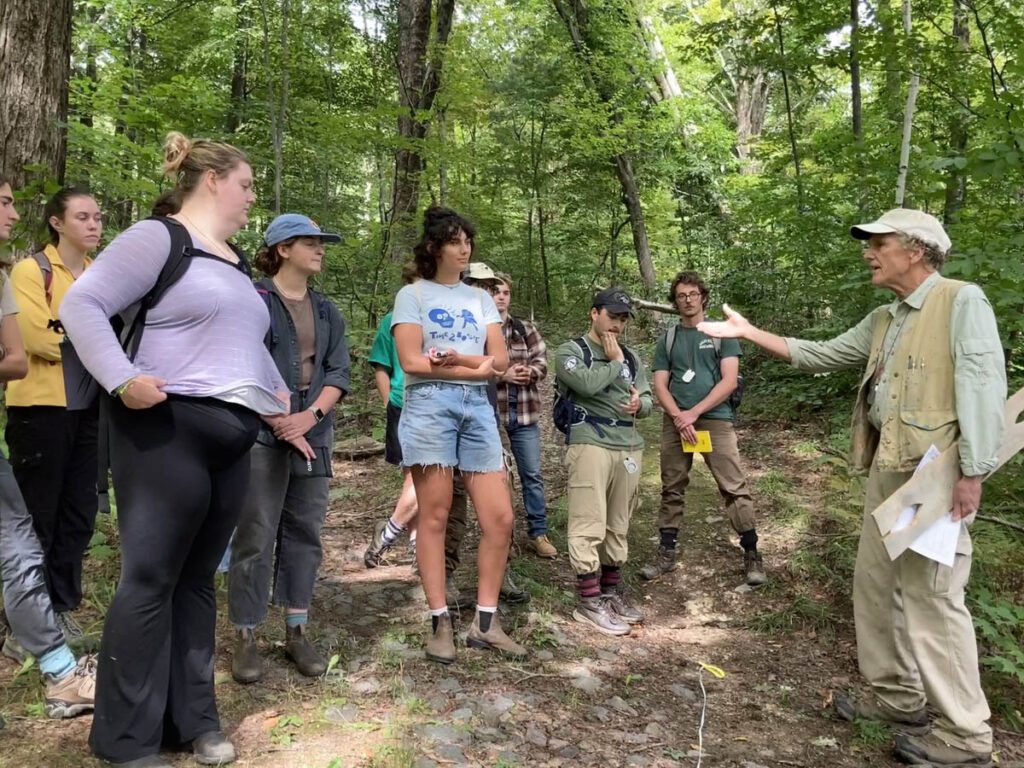
Together they told students the story of LHCF and of their personal experiences with this 16-year experiment in community-based conservation. In 2007, VFF board member Deb Brighton had developed LHCF in response to ecological, economic, and social issues surrounding forest ownership in Vermont, which made owning a forest affordable only to wealthier households.
Within LHCF, 16 shareholders jointly own a 115-acre forest parcel. The Vermont Land Trust holds a conservation easement on the land, which requires that it be carefully managed and never subdivided or developed. The remaining rights—including rights to carry out conservation practices, harvest firewood and timber, tap maples and produce maple sugar, hike, camp, and so on—are held by the 16 local shareholders. Half the shares are reserved and subsidized for Addison County residents whose family income falls below the county median.
With this basic understanding in hand, half the students headed into the forest with David Brynn, where they measured the slope of access roads and the distance between erosion control structures to see if they were adequate to the task of keeping the roads intact during storm events.
The rest of the students remained on the log landing with LHCF members John McEnerney, Lee Kauppila, Don Dewees, George Marcus, and Cecilia Danks. After a brief introduction to the safe use of wood splitters and hand axes, they set to work splitting wood for the Monkton Wood Bank, which supplies firewood to local community members in need, in coordination with HOPE (Helping Overcome Poverty’s Effects).
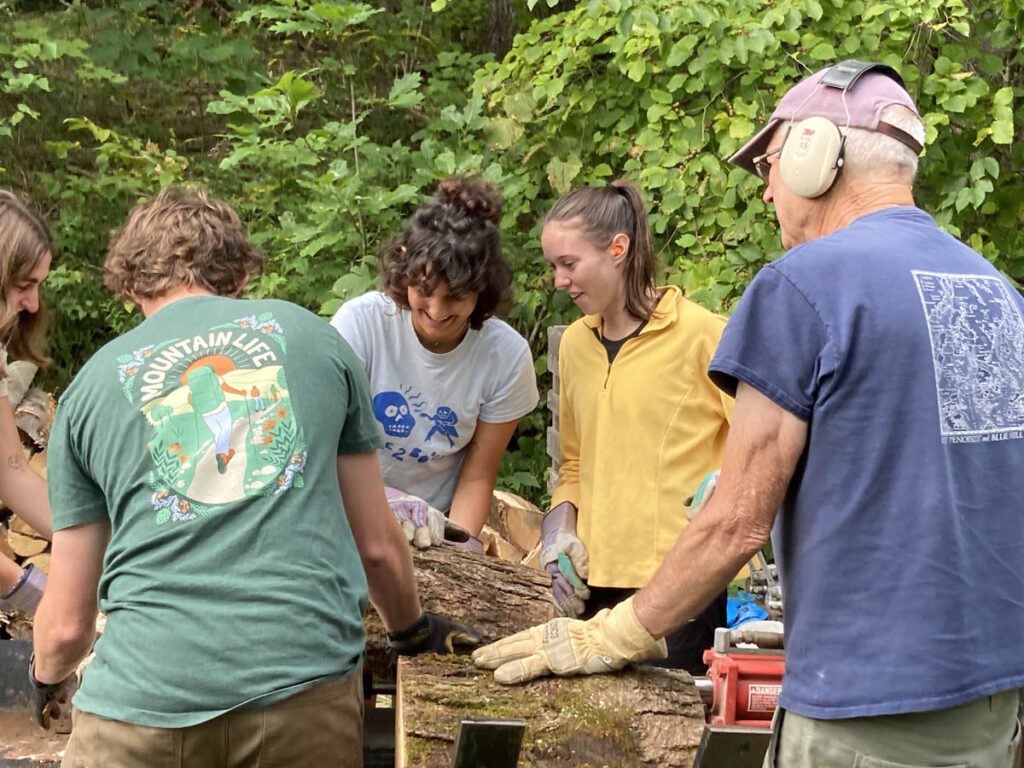
After a break for cider, donuts, and grilled hotdogs, the two groups switched places, and the work continued. By afternoon’s end, the Wood Bank firewood supply had grown considerably, and the food supply had dwindled. In the gold light of late day, the students gathered once again, expressing their thanks to all who made the afternoon–filled with the pleasures of hands-on work on behalf of community and the land–possible.

